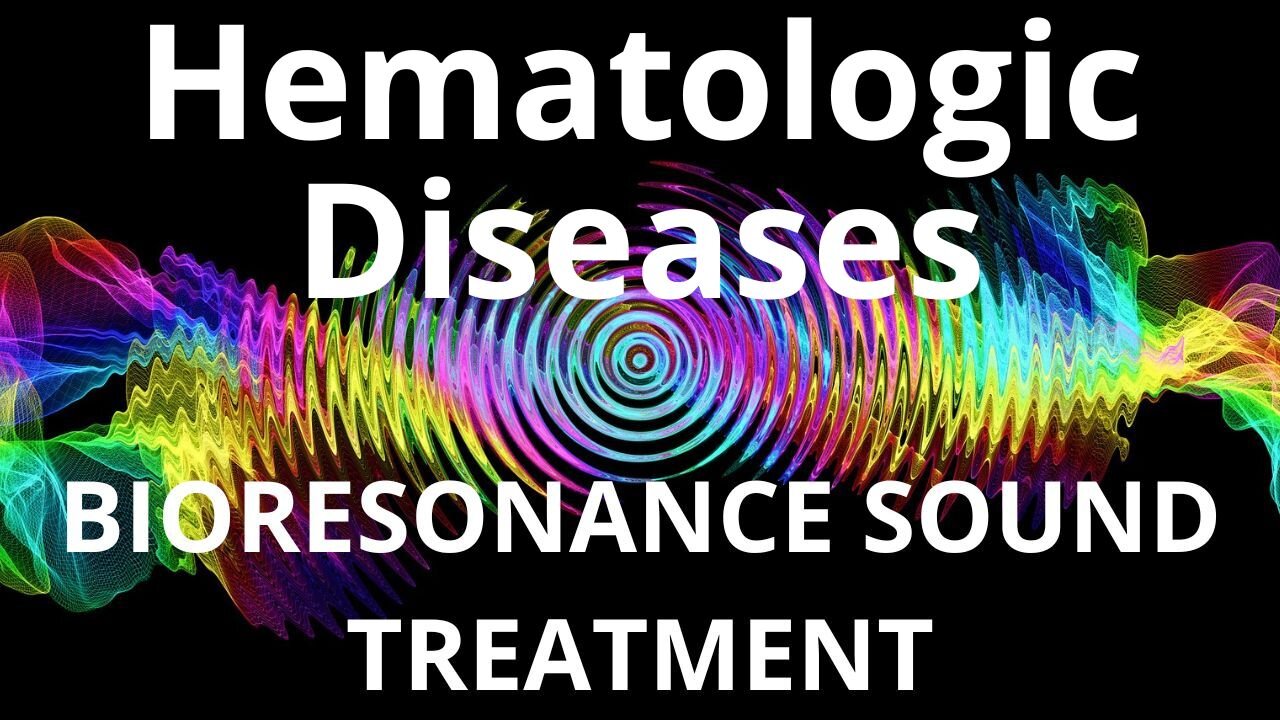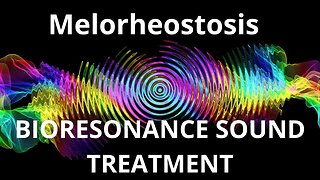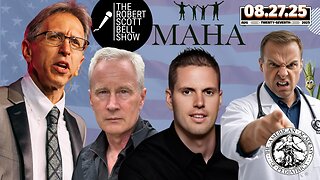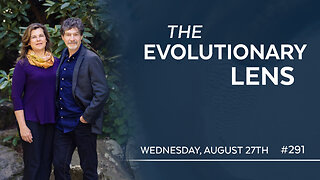Premium Only Content

Hematologic Diseases_Session of resonance therapy
Haematological disorders can also be referred to as blood disorders and can affect one or more parts of the blood. They can be both cancerous and non-cancerous.
There are three main cancerous haematological disorders – Leukemia, Lymphoma and Myeloma – which are all cancers arising from abnormal blood or bone marrow cells.
The Haematology Unit provides diagnosis and treatment of disorders of the blood and lymph nodes including:
Leukemia
Acute Myeloid Leukaemia (AML) – is a form of blood cancer, which affects the white blood cells known as myeloid cells
Acute Lymphoblastic Leukaemia (ALL) – is a form of blood cancer, which affects the white blood cells known as lymphocytes
Chronic Myeloid Leukaemia (CML) – Chronic Myeloid Leukaemia is a disease in which the bone marrow makes too many white blood cells
Chronic Lymphocytic Leukaemia (CLL)– is a form of blood cancer, which affects the white blood cells known as lymphocytes
Lymphoma
Hodgkin Lymphoma – Hodgkin Lymphoma is a cancer that develops in the lymph nodes of the lymphatic system
Non-Hodgkin lymphoma – Non-Hodgkin Lymphoma is a blood cancer that appears as a solid tumour in the glands, usually of the neck, chest, armpit or groin
Small Lymphocytic Lymphoma (SLL) – SLL is a type of blood cancer that develops from the white blood cells that fight infection. It is usually slow-growing and behaves like a chronic (long-term) condition, it needs treatment from time to time to keep it under control.
Myeloma
Myeloma– is a cancer arising from plasma cells, a type of white blood cell which is made in the bone marrow
MGUS – is a non-cancerous condition of the plasma cells
There are also a range of non-cancerous disorders treated within the Haematology Unit including:
Myeloproliferative Disorders (MPDS) – there are three main types of MPDs called Essential Thrombocythaemia, Polycythaemia Vera and Myelofibrosis which affect the levels of blood cells produced in our bodies
Myelodysplastic Syndrome (MDS) – a blood disorder that causes a drop in the number of healthy blood cells
The Trust’s Haematology Unit offers rapid advice, diagnosis and treatment for patients displaying symptoms of both non-cancerous and cancerous haematological disorders and has a specialist haematology team that will see you from when you are referred by your GP through to diagnose and treatment of your haematological disorder.
The team also provides support and advice to people in the community who have haematology disorders.
Our Cancer Services team is here to support you every step of the way.
This haematological disorders section on our website takes you through your pathway within the Trust and provides you with the information and support you will need throughout your journey.
Music affects a person, it can calm and cheer up, sounds can heal. The therapeutic effect is due to the frequency fluctuations of various sounds that resonate with various organs of the body. Sounds have bioresonance compatibility with the vibrations of human internal organs, which is the basis of the positive effect of sound treatment. The sound vibrations of music trigger many mechanisms of higher nervous activity in the patient's subconscious and start the healing process.
Sound therapy does not replace medical treatment, but complements it, improves the positive dynamics of treatment and speeds up recovery.
TO ACHIEVE A POSITIVE RESULT, DAILY LISTENING TO VIDEOS IS REQUIRED.
I wish you health and prosperity!
You can purchase unique medicines in my store:
https://store11998180.company.site/
You have the opportunity to support the channel:
https://destream.net/live/RadSiarAl/donate
-
 30:00
30:00
BIORESONANCE SOUND THERAPY
7 days agoMelorheostosis _ Sound therapy session _ Sounds of nature
731 -
 LIVE
LIVE
The Officer Tatum
1 hour agoBREAKING: Shooter IDENTIFIED TR*NS , Cracker Barrel CAVES To Pressure + MORE | EP 162
1,466 watching -
 LIVE
LIVE
Matt Kohrs
1 hour agoLIVE! Nvidia Earnings Call || NVDA Stock Reaction
391 watching -

The Quartering
3 hours agoFlag Burning, Free Speech, Church Attack & More With Andrew Wilson
103K220 -
 LIVE
LIVE
The Robert Scott Bell Show
17 hours agoDr. Peter McCullough, Vaccines: Mythology, Ideology, and Reality, Dr. Dan Sullivan, Chiropractic - The RSB Show 8-27-25
65 watching -
 1:21:03
1:21:03
Darkhorse Podcast
3 hours agoThe 291st Evolutionary Lens with Bret Weinstein and Heather Heying
6.24K6 -
 2:34:01
2:34:01
Steven Crowder
3 hours agoMinnesota Catholic School Shooting Update - Shooter & Manifesto
189K269 -
 LIVE
LIVE
Stephen Gardner
38 minutes ago🚨CHICAGO Mayor PISSED as Residents BEG Trump to send National Guard
812 watching -
 LIVE
LIVE
The HotSeat
1 hour agoChristian School Shooting in Minnesota – Faith Under Fire & Prophecy Being Fulfilled
596 watching -
 LIVE
LIVE
Film Threat
16 hours agoPEACEMAKER BLOWS GUNN'S DC! PLUS ALIEN: EARTH AND DEXTER RESURRECTION | Hollywood on the Rocks
80 watching